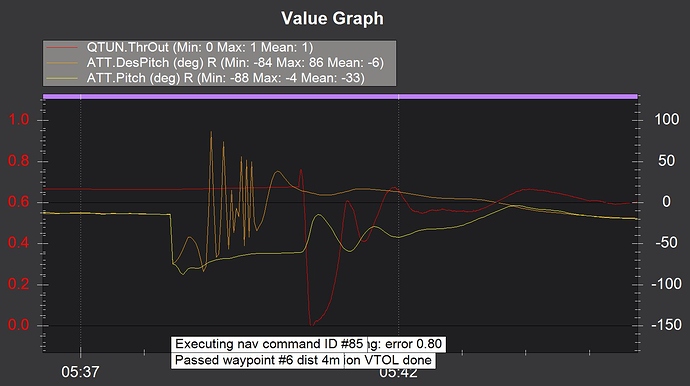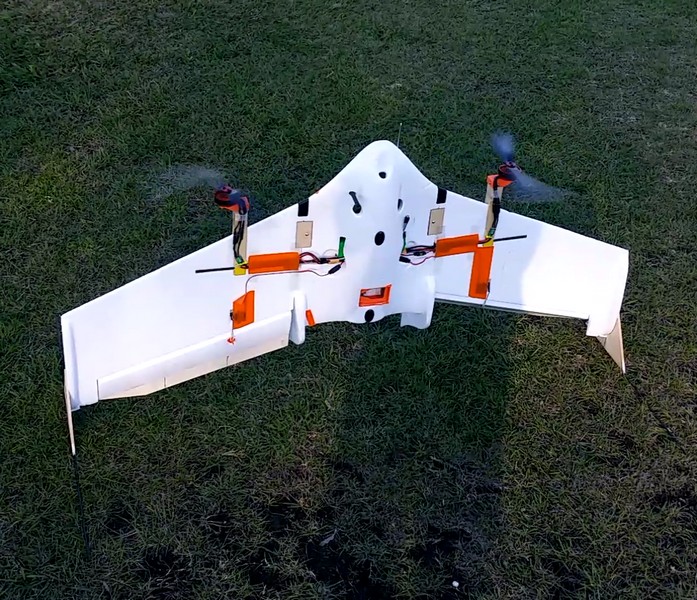Regarding the PID updates PR:
I believe Leonard is referring to the new Q_A_RAT_ [RLL, PIT, YAW] _FLTE parameters; if this parameter is zero, there will be no change in the behavior on that axis.
There are now 3 filter parameters per axis, FLTD, FLTE, FLTT
These are the values I currently have in SITL for the quad Stryker:
Note that I have set all the accel values very high:
Q_A_ACCEL_P_MAX 500000.000000
Q_A_ACCEL_R_MAX 500000.000000
Q_A_ACCEL_Y_MAX 500000.000000
Q_A_RAT_PIT_FLTE 0.000000
Q_A_RAT_RLL_FLTE 0.000000
Q_A_RAT_YAW_FLTE 1.000000
Q_P_ACCZ_FLTE 10.000000
Q_A_RAT_PIT_FLTD 10.000000
Q_A_RAT_RLL_FLTD 10.000000
Q_A_RAT_YAW_FLTD 10.000000
Q_P_ACCZ_FLTD 0.000000
Q_A_RAT_PIT_FLTT 20.000000
Q_A_RAT_RLL_FLTT 20.000000
Q_A_RAT_YAW_FLTT 20.000000
Q_P_ACCZ_FLTT 0.000000
Q_ACRO_PIT_RATE 180.000000
Q_ACRO_RLL_RATE 360.000000
Q_ACRO_YAW_RATE 360.000000
Q_A_RATE_FF_ENAB 1.000000
Q_A_RATE_P_MAX 0.000000
Q_A_RATE_R_MAX 0.000000
Q_A_RATE_Y_MAX 0.000000
Q_A_RAT_PIT_D 0.012536
Q_A_RAT_PIT_FF 0.100000
Q_A_RAT_PIT_I 0.264005
Q_A_RAT_PIT_IMAX 0.500000
Q_A_RAT_PIT_P 0.264005
Q_A_RAT_RLL_D 0.004074
Q_A_RAT_RLL_FF 0.000000
Q_A_RAT_RLL_I 0.211828
Q_A_RAT_RLL_IMAX 0.500000
Q_A_RAT_RLL_P 0.211828
Q_A_RAT_YAW_D 0.050000
Q_A_RAT_YAW_FF 0.200000
Q_A_RAT_YAW_I 0.111139
Q_A_RAT_YAW_IMAX 0.500000
Q_A_RAT_YAW_P 0.200000
Q_TILT_RATE_DN 0.000000
Q_TILT_RATE_UP 0.000000
Q_YAW_RATE_MAX 60.000000
Also, the copter tuning documentation has been updated, but I don’t see any mention of the new filtering there: http://ardupilot.org/copter/docs/tuning-process-instructions.html?highlight=tuning


